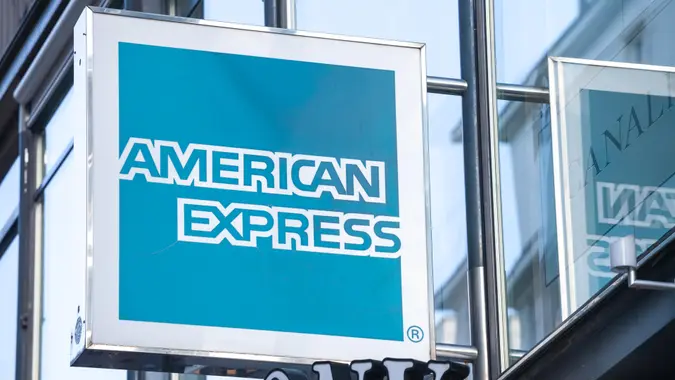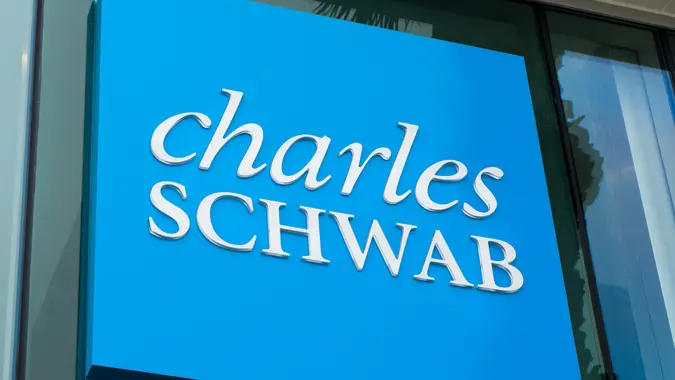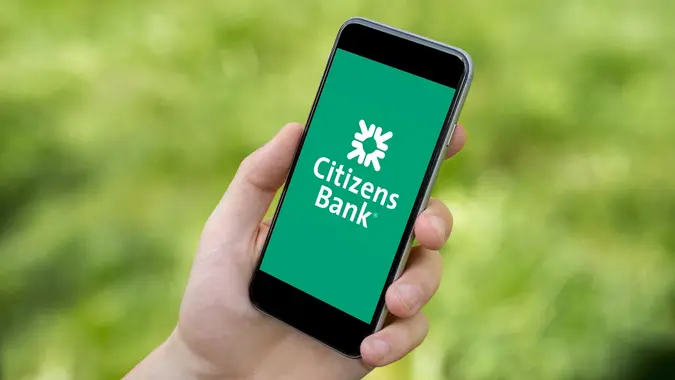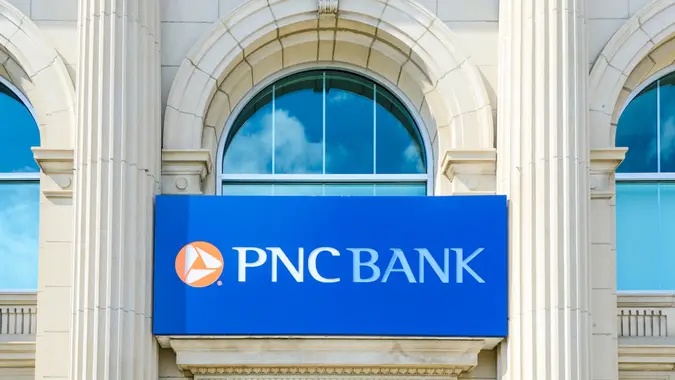Stay Away From Banks That Are Still Doing This in 2025

Commitment to Our Readers
GOBankingRates' editorial team is committed to bringing you unbiased reviews and information. We use data-driven methodologies to evaluate financial products and services - our reviews and ratings are not influenced by advertisers. You can read more about our editorial guidelines and our products and services review methodology.

20 Years
Helping You Live Richer

Reviewed
by Experts

Trusted by
Millions of Readers
The rise of online and digital banking has impacted the financial industry in a lot of ways — especially for customers. People now have more convenient ways to deposit, withdraw and spend their money, as well as access to all sorts of new perks and tools. Plus, with lower operating costs than their physical counterparts, digital banks can offer way more competitive interest rates.
Yet some banks still seem stuck in the past.
Choosing a bank in 2025 means finding those that have embraced new technologies and remained competitive in areas such as annual percentage yields, account fees, product diversity and ATM access.
If banks are still doing the following things in 2024, you should stay away from them and find another option.
1. Offering Low Savings Account APYs
Heading into the new year, the average annual percentage yield for a traditional savings account is .46%. Some banks come in even lower, with rock-bottom rates of 0.01% or 0.02% APY on all deposit amounts. Many of the lowest rates are at traditional brick-and-mortar banks.
There’s no reason to do business with a bank that offers you a minimal return on your money. You can find much better savings rates at other financial institutions such as Jenius Bankᵀᴹ.
Jenius Bank shows consumers what it means to bank smarter, with an APY of 10 times the national average on its high-yield savings account. There’s no minimum balance requirement, and deposits are insured by the FDIC up to $250,000¹.
Better yet, Jenius Bank doesn’t charge fees on its account, so the interest you earn stays in your account for as long as you have it.
2. Charging High Maintenance Fees
Numerous banks now provide fee-free checking and savings accounts — regardless of how much money you have deposited there. Many are online banks with low operating costs, which allows them to pass those savings on to customers.
Even so, you’ll still find plenty of banks that charge monthly maintenance fees as high as $15 or more. You can usually avoid these fees by keeping a minimum balance in the account. But in 2025, you can stay away from banks with high maintenance fees, because there are so many others that charge no fees at all.
3. Requiring High Minimum Balances
Similarly, some banks still require that you maintain high balances to avoid fees or even open an account. In some cases, you might have to deposit $1,000 or more just to open a certificate of deposit.
Minimum deposit requirements for standard checking and savings accounts are much lower, but even having a minimum of $50 is unnecessary when a growing number of banks have no minimum requirements on any of their accounts.
4. Limiting Your Access to Fee-Free ATMs
One of the most important functions a bank serves is giving customers quick and easy access to their money. This might come in the form of digital tools that let you transfer funds in and out of your account, or by letting you get cash from ATMs using your debit card.
If you have to pay fees to withdraw cash from an ATM, you’re basically losing money — and those charges can add up if you have to pay a $5 fee every time you use an out-of-network ATM.
There’s no reason you should open a checking account with a bank that doesn’t offer fee-free ATM banking. Even smaller banks can join ATM networks such as Allpoint that let customers withdraw money with no surcharges.
5. Offering Few Products and Services
Certain fintechs and neobanks offer only a single high-yield savings account as a way of luring customers away from the competition. But traditional banks are expected to offer a much wider selection. In 2025, there’s no reason a bank shouldn’t offer a full suite of products and services.
At the very least, you should expect your bank to offer a checking account, savings account, CD and money market accounts. If it also offers credit cards and loans, that’s even better. Some banks offer all of those products as well as investment, insurance and retirement services. Stay away from traditional banks that don’t offer a full banking experience.
6. Using Outdated Technology
The best banking websites and apps go well beyond just letting you log in and look at your account balances. They feature a clean, appealing design that’s easy to navigate, so you can quickly handle transactions or find important information like changes in interest rates or new bank offers.
Beyond that, the best sites provide tools that can help you budget your money and grow your wealth, along with blogs from financial experts. Given the technology available today, it’s best to stay away from banks with poorly designed or incomplete sites.
Jenius Bank is a division of SMBC MANUBANK. Member FDIC.
¹ FDIC Insurance up to the maximum allowed by law. Deposits at Jenius Bank and SMBC MANUBANK are combined for the purpose of calculating FDIC insurance limits.
 Written by
Written by  Edited by
Edited by 

























